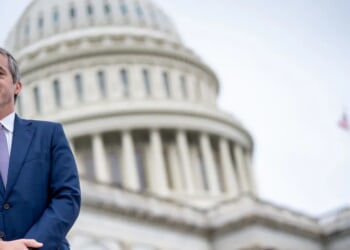Tony Lodge is a Research Fellow at the Centre for Policy Studies and author of Rail’s Last Chance – a four point plan to save the railways,
Britain’s railways are at a watershed. Under privatisation passenger journeys almost doubled. By the 2010s, private franchises were running three times as many trains between London and Manchester as the old British Rail (BR) had in the early 1990s.
During the two decades between privatisation in the early 1990s and the pandemic, passenger journeys increased by 107 per cent and services increased by 32 per cent. During this period, passenger satisfaction in Britain was higher than any other major European railway. Revenue increased by 145 per cent in real terms, compared with only a 16 per cent rise in operating costs, and £14bn of private investment was put into improving the train fleet.
It also introduced innovations in marketing, ticketing, and operational efficiency. The volume of rail travel in Britain rose to a level not seen since the 1930s, on a network half the size and with a very good safety record.
The pandemic was devastating for rail. It wasn’t just that train travel collapsed during the lockdowns, requiring subsidies of £20.5bn (in 2023/4 prices) to cover losses, but that people’s travel and working behaviour changed, probably forever.
Traditional flows of revenue from business travel, first-class, and five-day commuter season tickets, particularly in London and the South East, have fallen away. In the year to March just 13 per cent of journeys were made using season tickets, compared with 34 per cent before the pandemic. Even though passenger numbers are close to 100 per cent of pre-pandemic levels, revenue is still down by £1.4bn and stands at just 89.1 per cent with a low yield. Passengers are paying less to travel outside the old peaks.
Meanwhile, the taxpayer continues to cover an unacceptably high annual subsidy of £12bn for a sector which only delivers two per cent of all journeys taken by the public. Without a ruthless focus on what passengers want, alongside a demand-led model, then a spiral of decline alongside even higher subsidy and fares could quickly take root.
Plans for a new nationalised railway company, Great British Railways, risk being a solution in search of a problem and morphing into the ghost of the old British Rail – unless ministers develop a viable long-term vision to deliver growth. Our new research from the Centre for Policy Studies highlights four key areas which, if supported will deliver better services, more passengers and more revenue.
First, ministers should support a competitive mixed model across the intercity high speed network so that GBR trains face on track competition from non-subsidised ‘open access’ operators.
I first covered the need to support more open access rail competition on Conservative Home in 2014. For 25 years this model has successfully delivered passenger growth and satisfaction on the East Coast Main Line (ECML) between London, the North East, and Scotland. It has meant better services, more routes, faster trains, and cheaper tickets whilst at the same time bringing more passengers to the route.
This has not just seen new, popular rail operators enter the market, but pushed the dominant government run train operator, LNER, to deliver better for its customers.
Importantly, European railways who have copied this successful model have seen a 40 per cent increase in passengers and fare reductions of between 20-60 per cent. On the ECML open access services now represent 20 per cent of all trains and there should be a policy ambition for at least ten per cent of all intercity services to be open access by 2030 on all high speed routes.
Second, Great British Railways should not regulate itself, especially as the White Paper proposes taking key sector powers away from the independent Office of Rail and Road. In no other regulated sector does the dominant market operator also control and deliver key elements of its own regulation, such as decisions on market access and charging.
This could have huge implications for growth, open access, and more rail freight; only last week, the Environment Secretary slammed the water companies for “marking their own homework” and pledged to end “operator self-monitoring”.
But this risks becoming the case on the railways which would also undermine a level playing field, cost control, transparency, and accountability. Importantly, the ORR approved more open access on the ECML earlier this week. The decision will see existing services extended, notably the LUMO service between London and Edinburgh, which has been given permission to run on to Glasgow. This provides more choice and competition for Scottish intercity passengers and also makes rail more competitive with air.
Third, GBR must adopt an unforgiving focus on making train travel as easy, cheap and user friendly as possible, not least when designing a new GBR ticketing app to replace those of the existing train operating companies. As well as competing with existing and popular ticketing sites, it must not be designed by civil servants but instead by the world’s leading retail software leaders. GBR must deliver a ‘Rail Miles’ loyalty scheme, which is years overdue and can be linked with purchases across hospitality and retail.
Fourth, the vast 52,000-hectare railway estate can and must generate much more income. Commercial and residential development, renewable energy generation, light parcel freight, health hubs at stations, alongside a higher-quality retail offer, are all under-utilised sources of income.
Though Network Rail doesn’t currently hold data on the total amount of renewable energy generated from its estate, ministers estimate that it has the potential capacity to generate 188 MWp (megawatts peak) of solar power across 34 sites. This is a substantial potential energy supply, which could power the equivalent of between 140,000 to 180,000 homes and earn the railway tens of millions of pounds in new revenue.
What about the potential for lineside solar along vast swathes of Britain’s 9,848 mile rail network? This could turn the railways into one of Britain’s biggest energy suppliers – developed on land the government owns – not to mention providing it with a substantial new clean power source.
The ghost of British Rail lingers. The recent political pressure on the regulator to reject more open access is an alarming portent. But if the passenger is put first, and proven successes are embraced, then the future could be very different.


![Former Bravo Star Charged After Violent Assault Using a Rock-Filled Sock in Tennessee Walmart [WATCH]](https://www.right2024.com/wp-content/uploads/2025/07/Former-Bravo-Star-Charged-After-Violent-Assault-Using-a-Rock-Filled-350x250.jpg)




![Karoline Leavitt Levels CNN's Kaitlan Collins and Other Legacy Media Reporters [WATCH]](https://www.right2024.com/wp-content/uploads/2025/07/Karoline-Leavitt-Levels-CNNs-Kaitlan-Collins-and-Other-Legacy-Media-350x250.jpg)
![Man Arrested After Screaming at Senators During Big Beautiful Bill Debate [WATCH]](https://www.right2024.com/wp-content/uploads/2025/06/Man-Arrested-After-Screaming-at-Senators-During-Big-Beautiful-Bill-350x250.jpg)
![Illegal Alien Walked Free After Decapitating Woman, Abusing Corpse for Weeks [WATCH]](https://www.right2024.com/wp-content/uploads/2025/07/1753013138_Illegal-Alien-Walked-Free-After-Decapitating-Woman-Abusing-Corpse-for-350x250.jpg)







